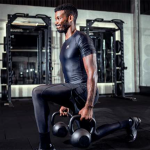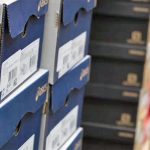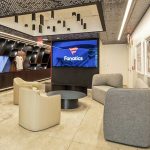On Columbia Sportswear’s Q2 analyst call, Tim Boyle, chairman, president and CEO, said softer sell-through trends in the U.S. due to “cautious consumer behavior” and elevated inventory levels, particularly in footwear, caused the company to slash its guidance for the year.
“The current environment is making it difficult to achieve the long-term growth algorithm that I believe we’re capable of,” said Boyle. “Given current trends we’re seeing in the business, we are taking a more conservative approach to how we plan the second half of the year.”
In particular, he highlighted that while marketplace promotional activity continues to normalize, Columbia anticipates a higher level of clearance activity as the company works down inventory levels. Companywide inventories were up 21 percent year-over-year at the quarter’s end.
The updated guidance for the year calls for:
- Net sales in the range of $3.53 billion to $3.59 billion for 2023, down from a prior forecast of $3.57 billion to $3.67 billion. Net sales growth is now seen in the range of 2.0 percent to 3.5 percent versus prior expectations of 3 percent to 6 percent compared to 2022.
- Operating income in the $348 million to $368 million range, down from the prior forecast of a range of $413 million to $432 million, representing an operating margin of 9.8 to 10.3 percent (prior 11.6 to 11.8 percent).
- EPS in the $4.40 to $4.65 per share range versus the prior forecast of EPS in the $5.15 to $5.40 per share range.
“I remain confident in our strategies and our ability to achieve the significant long-term growth opportunities we see across the business,” said Boyle. “With that being said, our brands are not immune to macroeconomic pressures and headwinds. In this environment, we’re focused on what we can control, including expense discipline and executing our inventory reduction plan. We’re also continuing to invest in the business to drive long-term profitable growth. In challenging times, our strong financial position is a strategic advantage.”
Q2 Sales Boosted By Early Fall Shipments
For the second quarter, net sales increased 7 percent (9 percent constant-currency) to $620.9 million, ahead of Columbia’s prior outlook due to earlier-than-planned fall ’23 shipments that more than offset slower growth in its U.S. DTC business. Sales were ahead of analysts’ consensus estimate of $587 million.
Boyle said, “It’s important to note that on-time 2023 shipments resulted in sales shifting into the first quarter compared to last year when we delivered products late. This presented a headwind to the second quarter. Conversely, we are shipping fall ’23 orders earlier this year, which created a tailwind to second-quarter growth. These timing movements create a pronounced impact in regional and brand net sales results.”
Net income in the quarter increased 17 percent to $8.4 million, or 14 cents per share, compared to net income of $7.2 million, or 11 cents, for the comparable period in 2022. Earnings exceeded Wall Street’s consensus estimate of 14 cents. The earnings increase reflected a jump in interest income due to higher yields on cash, cash equivalents, and investments.
Operating income decreased 29 percent to $6.2 million, or 1.0 percent of net sales, compared to $8.8 million, or 1.5 percent of net sales, for the comparable period in 2022.
Gross margin expanded 140 basis points to 50.6 percent of sales, roughly in line with the company’s outlook. Lower inbound freight costs offset higher clearance and promotional activity as well as higher distributor shipments which generally carries lower gross margins. Boyle said, “Overall, promotional activity is elevated compared to 2022 when promotions were exceptionally low. Within our DTC business, we have increased planned clearance activity as we focused our efforts on reducing inventories.”
SG&A expenses increased 11 percent to 50.3 percent of sales, from 48.7 percent due to expense increases across direct-to-consumer (DTC), supply chain, and enterprise technology.
By region, growth in the Europe, Middle East and Africa (EMEA) and Latin America Asia Pacific (LAAP) regions, primarily driven by earlier fall ’23 distributor shipments and increased China sales, helped offset declines in Canada and the U.S., which were primarily driven by a lower portion of spring ’23 orders shipped in the second quarter compared to the same period in 2022.
U.S. Sales Slide 3 Percent
U.S. sales decreased 3 percent to $399.1 million. U.S. wholesale decreased high single-digit percent, driven in large part by on-time spring ’23 shipments, which shifted sales into the first quarter. The Columbia brand’s spring sales are down slightly compared to last year. After a stronger start to the season, driven in part by better inventory availability, sell-through trends slowed in the second quarter.
U.S. DTC sales increased low-single digits while brick-and-mortar was up mid-single digits, driven by new stores opened last year as well as incremental sales from temporary outlet stores. U.S. e-commerce sales were down mid-single digits. Boyle said, “The online environment has become more competitive and promotional as consumers seek out value in the marketplace.”
In the first half of this year, Columbia’s U.S. DTC business grew low single-digit percent. Boyle said that while wholesale shipments remain the priority for the company, Columbia sees “long-term opportunities to accelerate our DTC growth and improve efficiency and profitability.” He noted that Columbia recently hired David Theiss, who formerly led Vans’ DTC efforts, as SVP of North America DTC to drive the improvement.
China’s Sales Surge 140 Percent
Internationally, sales in the in LAAP region grew 35 percent on a currency-neutral basis to $93.1 million.
China was the standout performer with sales running up over 140 percent as the year-ago period faced pandemic restrictions. Boyle said, “Improved store productivity and enhanced marketing are among the key drivers enabling us to capitalize on growing consumer interest in outdoor activities in this important market.”
Boyle said a new premium China-specific collection, Transit, is connecting with younger consumers and the Columbia brand drove strong results during the 6/18 event across all key platforms, including Tmall, JD and TikTok. E-commerce has also continued to perform well as in-store traffic revives. Boyle said, “We continue to anticipate that China will be one of our fastest-growing markets in 2023. Japan net sales increased mid-single digit percent led by healthy growth in our DTC brick-and-mortar stores. We continue to see encouraging traffic trends in our branded stores as the tourism industry recovers.”
Korea’s sales declined double-digit percent. Boyle said Columbia continues to reset the Korea business and has closed unprofitable doors in the first half. He said, “We believe these efforts to reposition the brand and elevate distribution will drive a deeper connection with the next generation of consumers and fuel long-term sustainable growth.”
EMEA sales vaulted 75 percent to $100.8 million as healthy DTC growth offset the impact of last year’s late spring shipments.
Canada sales were down 16 percent to $27.7 million as spring ’23 shipments shifted into the first quarter. This was partially offset by healthy DTC growth, which was strong across both e-commerce and brick-and-mortar.
Columbia Brand’s Q2 Sales Climb 11 Percent
By brand, Columbia brand’s sales increased 11 percent during the quarter to $537 million, including the benefit of earlier fall ’23 shipments.
“The Columbia brand’s differentiated cooling technologies and sun protection products have never been more important,” said Boyle. “We have a broad range of innovation in our product line, built from a platform of sun protection and cooling technologies, including Omni-Freeze Zero, Omni-Shade Sun Reflector, and our most recent addition, Omni-Shade Glove Spectrum. These innovations differentiate the Columbia brand in the marketplace and position us as a leader in sun protection.”
Looking to fall selling, the Columbia brand will look to build on the success of Omni-Heat Infinity which remains “one of the fastest-growing parts of our product line and will be our top marketing story this fall.” Also being emphasized for fall is Omni-Heat Helix cell-style insulation for heat management, as well as the launch of the Facet 75 Alpha in footwear.
Sorel’s Quarterly Sales Jump 32 Percent
Sorel’s sales increased 32 percent to $37.8 million, primarily driven by earlier fall ’23 shipments and increased wholesale closeout sales. Overall, Sorel’s spring sell-through is up versus last year, largely reflecting higher clearance and promotional activity in a challenging footwear environment. Sandals have been a top performer this spring, led by styles like the Kinetic Impact sandal.
Boyle noted that as announced, Sorel brand President Mark Nenow stepped down during the quarter due to health reasons and SVP of emerging brands, Craig Zanon, is leading Sorel until a new president is named.
Mountain Hardwear’s sales decreased 19 percent to $18.5 million, driven in large part by the timing shift of spring orders.
Prana’s sales decreased 32 percent in the quarter to $27.6 million with a decline in wholesale driven in part by the timing of spring orders as well as a decline in DTC. Boyle noted that as recently announced, Tricia Shumavon, formerly global VP of sportswear for Adidas, was appointed Prana’s president, starting in September. He said, “Tricia will be able to leverage her deep roots in design, product management and merchandising to position the Prana brand for growth in future seasons.”
Inventory Reduction Remains Priority
Boyle said the combination of lower inventory buys, shipment of fall ’23 orders and increased excess inventory sales in outlet stores are expected to result in inventories being down year-over-year exiting the third quarter. He added that Columbia remains on track to reduce year-end inventory by over $200 million compared to last year. Boyle said, “Returning inventory to a healthy position is a vital step to improving our financial performance.”
Columbia also provided guidance for the third quarter that calls for:
- Sales be $995 to $1,010 million, representing a growth of 4 to 6 percent from $955.1 million for the comparable period in 2022.
- Operating income to be $132 to $138 million, resulting in an operating margin of 13.2 to 13.6 percent, compared to an operating margin of 15.2 percent in the comparable period in 2022.
- EPS is to be $1.60 to $1.70 compared to $1.80 for the comparable period in 2022.
Photo courtesy Columbia Sportswear
















